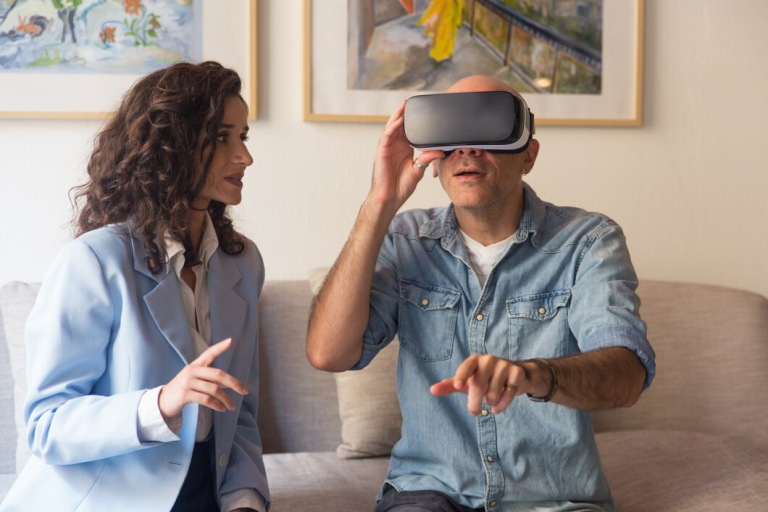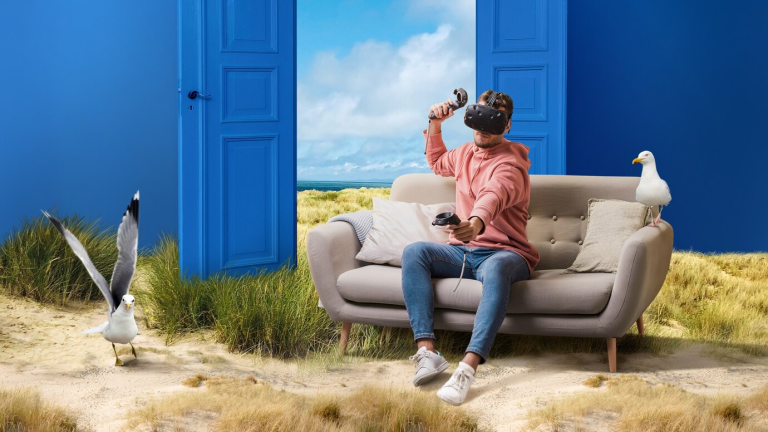Virtual Reality (VR) has emerged as a game-changer in the world of interior design. By enabling designers and clients to immerse themselves in a fully interactive, 3D-rendered environment, VR revolutionizes how spaces are conceptualized, visualized, and brought to life. Whether you’re a seasoned designer or new to the concept, this guide will walk you through the steps to effectively incorporate VR into your interior design projects.
Why Virtual Reality is Transforming Interior Design
Gone are the days when clients had to rely solely on blueprints or static renderings to envision their spaces. VR allows clients to step into their future rooms, providing an unparalleled sense of scale, layout, and aesthetics.
Key Benefits:
- Enhanced Visualization: Clients experience designs in a life-like, immersive environment.
- Improved Communication: Reduces miscommunication between designers and clients, ensuring alignment on vision.
- Cost and Time Efficiency: VR helps identify potential issues before construction begins, saving time and money.
Stat: Projects that incorporate VR have seen a 40% reduction in design revisions, resulting in faster project timelines.
Step 1: Understand the Technology and Its Benefits
Before diving in, familiarize yourself with how VR works in the interior design process. VR involves creating detailed 3D models that can be explored through VR headsets, offering a realistic preview of the space.
Pro Tip: Educate your clients on the value of VR to enhance their understanding and trust in the process.
Step 2: Choose the Right VR Software
Selecting the right software is crucial for creating high-quality virtual spaces. Here are some of the top options:
- SketchUp: Known for its user-friendly interface and compatibility with VR plugins, ideal for creating detailed models.
- Planner 5D: Offers a library of design elements and VR capabilities for immersive walkthroughs.
- Live Home 3D: Simplifies the process of designing and showcasing interior spaces with its VR integration.
Stat: Designers who use software like SketchUp report a 25% increase in client satisfaction due to enhanced visualization.
Step 3: Invest in VR Hardware
Pairing your software with the right hardware is essential for an immersive experience.
Recommended VR Headsets:
- Meta Quest 3: A wireless headset offering crisp visuals and smooth navigation.
- HTC Vive: Perfect for large-scale projects with precise motion tracking.
- Oculus Rift S: A reliable choice for high-resolution walkthroughs.
Ensure your computer meets the VR system’s requirements for seamless performance.
Step 4: Create a Detailed 3D Model
Your 3D model is the foundation of your VR experience. Use your chosen software to:
- Design Layouts: Include walls, windows, and architectural features.
- Furnish the Space: Add furniture, fixtures, and decor elements to bring the design to life.
- Apply Textures and Lighting: Use realistic materials and lighting to enhance the model’s authenticity.
Pro Tip: Include multiple design options for clients to compare in the VR environment.
Step 5: Export to VR
Once your 3D model is complete, export it to a VR-compatible format. Most VR software provides tools for seamless conversion.
Checklist for Exporting to VR:
- Optimize your model for VR to ensure smooth rendering.
- Check for alignment issues, such as misplaced furniture or incorrect lighting.
- Test the model yourself using a VR headset to ensure it’s ready for presentation.
Step 6: Present the Design to Clients
This is where VR truly shines. Invite your clients to step into their future space and explore it in real time.
How to Maximize Client Engagement:
- Allow them to navigate the space at their own pace using VR controllers.
- Highlight key features by guiding them through the design.
- Encourage feedback and make adjustments in real time to align with their vision.
Stat: Clients who experience VR walkthroughs are 50% more likely to approve designs without major revisions.
Step 7: Refine and Finalize
Based on client feedback, refine the design to meet their preferences. VR allows you to test changes instantly, ensuring the final model is accurate and aligned with expectations.
Pro Tip: Save multiple versions of the design to showcase different configurations or themes.
Step 8: Stay Ahead with VR Trends
VR technology is constantly evolving, so staying updated is essential.
Emerging Trends in VR for Interior Design:
- AI Integration: Automate design suggestions based on client preferences.
- Multi-User Collaboration: Allow multiple stakeholders to interact in the VR environment simultaneously.
- Augmented Reality (AR) Extensions: Combine VR with AR to visualize designs in real-world settings.
Attending industry conferences and webinars can keep you informed about the latest tools and techniques.
Why VR is the Future of Interior Design
Virtual Reality not only transforms how spaces are visualized but also redefines client-designer collaboration. It offers unparalleled precision, eliminates guesswork, and builds trust between all parties involved.
Fact: By 2030, the global VR market in interior design is projected to reach $7 billion, driven by increasing demand for immersive experiences.
How VRchitects Can Help
At VRchitects, we specialize in integrating Virtual Reality into every stage of the interior design process. Our team ensures:
- Seamless VR experiences that bring your vision to life.
- Accurate and realistic designs that align with client expectations.
- Cutting-edge tools and techniques to stay ahead of industry trends.
Ready to revolutionize your interior design projects with VR? Contact VRchitects today to get started!






